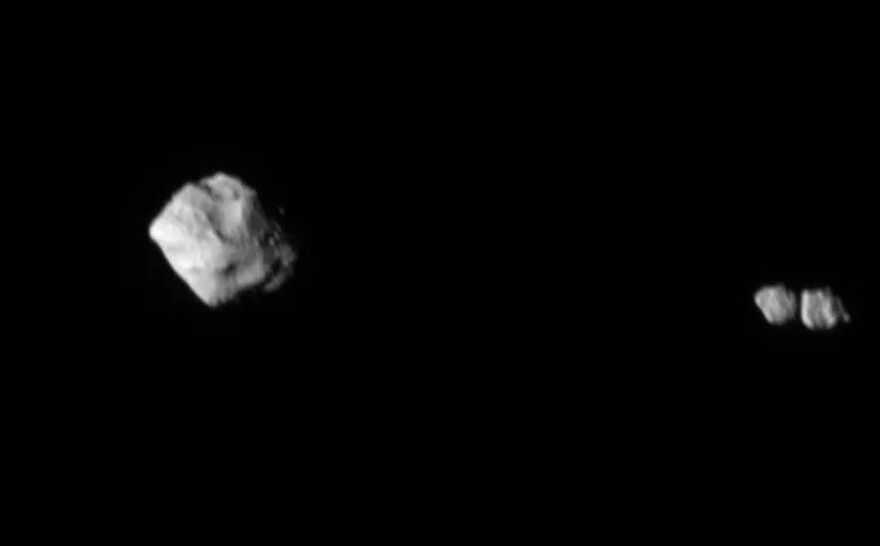NASA missions allow astronomers to study “binary asteroid” systems. Astronomers are interested in how long ago these systems were formed.

Dinkinesh and Selam
There are millions of asteroids orbiting in the Solar System. And some of them do have a strange configuration. A recent example of one of them was discovered when Lucy (NASA’s Trojan asteroid mission) passed by main belt asteroids called Dinkinesh.
It was discovered that Dinkinesh has a “moon” — and this moon is a “contact” one. Now known as Selam, it consists of two bodies touching each other, but not merged together. How and when such an unexpected system could have formed is described in a new article by Colby Merrill, a graduate student at Cornell University and their co-authors from the University of Colorado and the University of Bern. It is published in the journal Astronomy&Astrophysics.
The article considers, in particular, the question of when the system could have been formed, and this is done using modeling. The theory of asteroid formation is called the binary Yarkovsky-O’Keefe-Radzievskii-Paddack effect, which, since no one wants to pronounce the full name, is shortened to the abbreviation BYORP. This model explains how binary asteroid systems arise in general.
How do binary asteroids form?
In fact, the asteroid accelerates its rotation through radiation pressure. Eventually, thanks to these rotational forces, it reaches a point where its gravity is no longer able to hold all its material on the surface, and some of this material is ejected into space, eventually turning into a “moon” for a slightly larger asteroid.
Selam does have the two widest points, as it has a shape that is technically called a bilobate, but is more often referred to as a “dumbbell” shape. This may partly be due to another force influencing the formation of asteroids – tides.
Traditionally, people think that tides are caused by the movement of the Moon around the Earth. However, they can also occur on the inner surface of asteroids when a small body is affected by the gravitational force of a smaller body still nearby. For example, Selam causes tides on Dinkineshi, and understanding how they evolved together requires understanding how these forces operate.
Determining the age of a contact binary asteroid
Modeling both tidal forces and the BYROP acceleration process is mathematically challenging. Especially because the input data for the equations used to model them contain many uncertainties. Fortunately, there is a method that can help with this.
The Monte Carlo method uses statistics to find the “right” answer by varying the incoming data in equations and randomly selecting the results. The authors applied it to determine how long the Dinkinesh / Selam system had been in orbit around each other, using inputs such as the size and orbital velocities of each of the objects. It turned out to be from 1 to 10 million years. It is not very long in the general scheme of the evolution of the Solar System.
Considering that binary systems make up at least 15% of near-Earth asteroids, and contact binaries make up from 14% to 30% of small bodies which still exceed 200 m in size, their study may prove useful for understanding how asteroids form as a whole.
As noted in the article, further work is needed, especially an analysis of the craters present in Selam, which could provide an alternative view of its age. Given that we accidentally discovered this binary system in November 2023, this data, as well as much more from the Lucy mission, will undoubtedly appear soon.
According to phys.org


